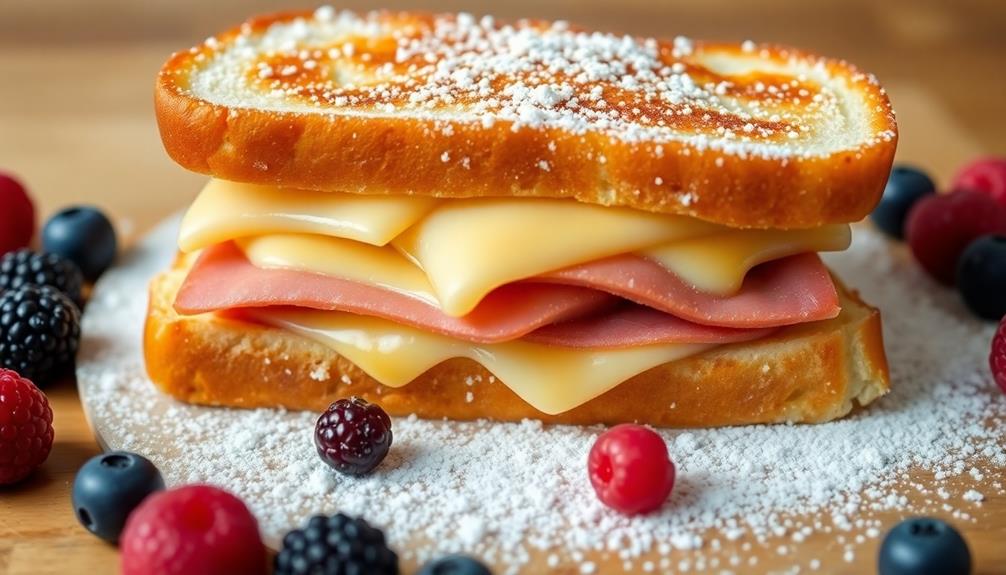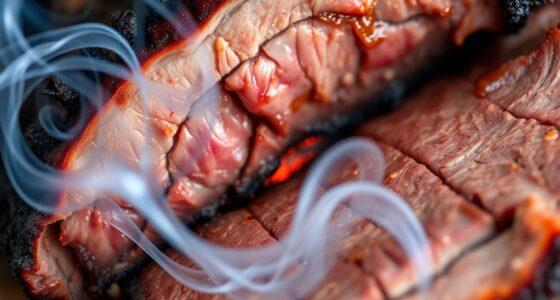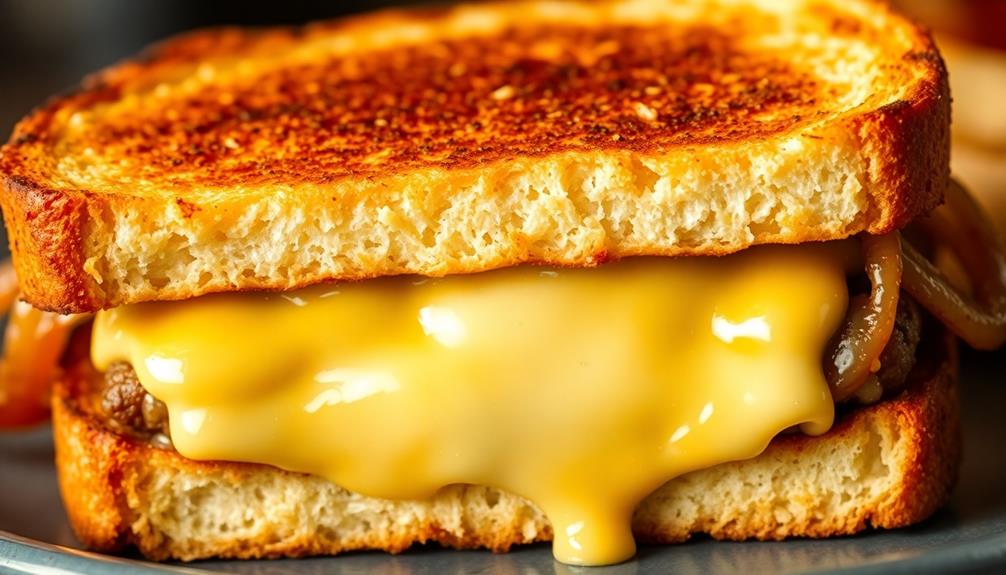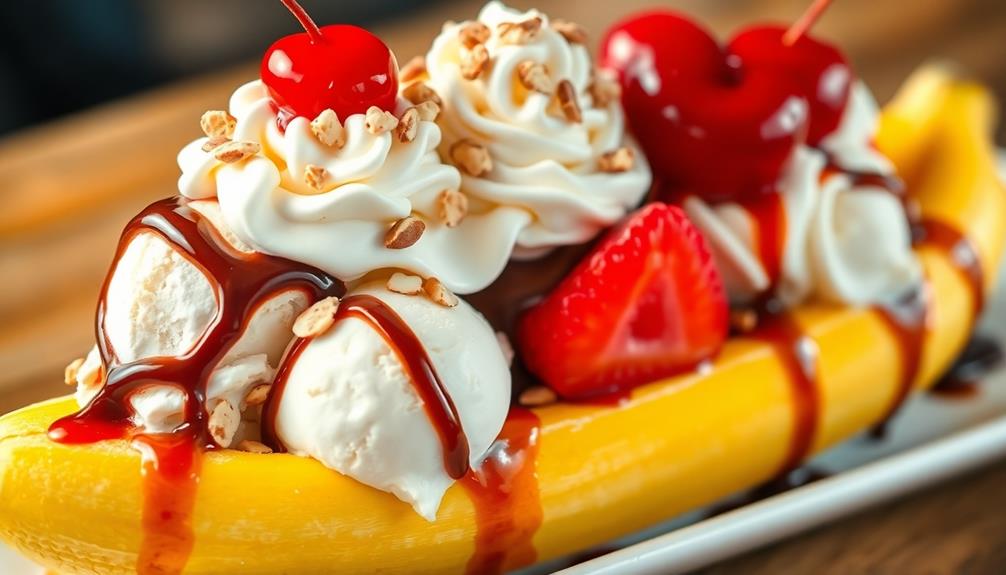The Monte Cristo sandwich is a delightful fusion of French and American culinary traditions. Originating from the classic croque-monsieur, this mouthwatering creation has evolved with the addition of egg batter and powdered sugar. Sliced white bread is dipped in an egg mixture, creating a crispy golden-brown exterior when fried. Layers of savory ham, turkey, and melted Swiss cheese are stacked between the bread, offering a satisfying contrast of flavors and textures in every bite. Served warm with a dusting of powdered sugar, the Monte Cristo is a versatile dish suitable for any meal – and there's more to discover about its rich history and preparation.
Key Takeaways
- The Monte Cristo sandwich originated from the French croque-monsieur, a grilled ham and cheese sandwich, and evolved with the addition of egg batter and powdered sugar.
- Essential ingredients for the Monte Cristo sandwich include sliced white bread, turkey, ham, Swiss cheese, and eggs, which are dipped in an egg mixture and fried until golden brown.
- The sandwich is typically assembled by layering the fried bread slices with turkey, ham, and Swiss cheese, and then cooking the entire sandwich in butter until the cheese is melted.
- The Monte Cristo sandwich gained popularity in the United States during the 1950s, becoming a diner staple and combining French and American culinary traditions.
- The unique flavor profile of the Monte Cristo sandwich, which combines savory ham, melted cheese, and sweet toppings, creates a satisfying and versatile dish suitable for any meal.
History
The origins of the Monte Cristo sandwich can be traced back to the classic French croque-monsieur, a grilled ham and cheese sandwich. This delectable dish likely took its name from the famous Alexandre Dumas novel, "The Count of Monte Cristo."
Over time, the sandwich evolved, with the addition of egg batter and powdered sugar, creating the sweet and savory treat we know today.
The Monte Cristo sandwich gained popularity in the United States during the 1950s, when it became a staple on the menus of diners and cafes across the country. Its unique flavor profile, blending the richness of the cheese and ham with the lightness of the egg batter, has captivated generations of sandwich lovers.
Whether you're enjoying it for breakfast, lunch, or even dessert, the Monte Cristo sandwich is a true culinary delight, a perfect marriage of French and American cuisine.
Its history is as intriguing as its taste, making it a beloved classic that continues to satisfy taste buds everywhere.
Cooking Steps
First, prepare the ingredients for the Monte Cristo sandwich. You'll need sliced white bread, turkey, ham, Swiss cheese, and eggs.
Beat the eggs in a shallow bowl and add a splash of milk. Heat a skillet over medium-high heat and melt a pat of butter.
Dip each slice of bread into the egg mixture, coating both sides. Place the coated bread slices in the hot skillet and cook for 2-3 minutes per side, or until golden brown.
Layer the turkey, ham, and Swiss cheese between two slices of the French toast-style bread. Gently press the sandwich together and cook for an additional 1-2 minutes per side, until the cheese is melted.
Serve the Monte Cristo sandwich warm, with a dusting of powdered sugar and a side of raspberry jam for dipping. Enjoy this sweet and savory treat!
Step 1. Slice Bread Diagonally Into Triangles
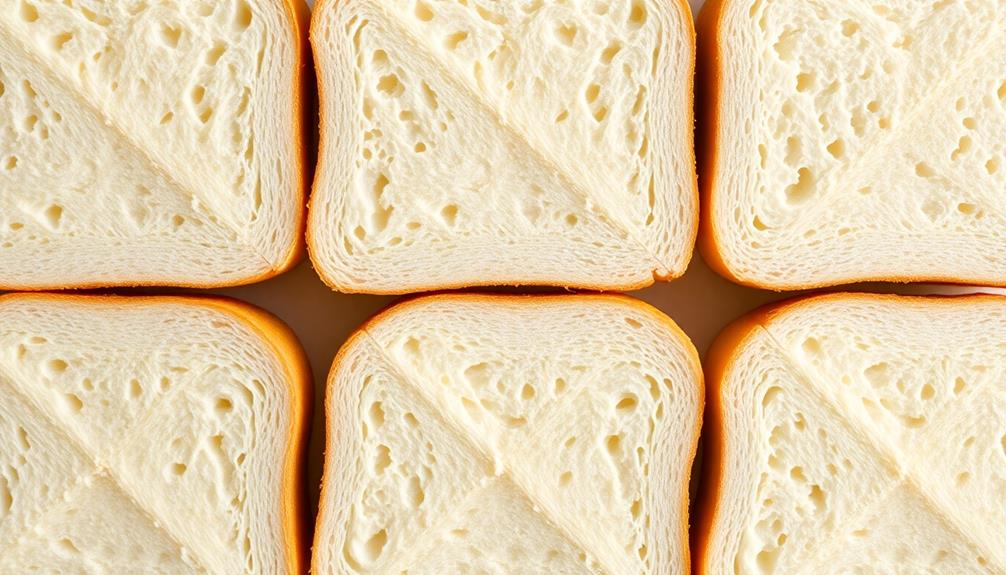
Slice the bread diagonally into triangles. This technique gives the Monte Cristo sandwich its signature look and helps the filling stay in place. Grab a sharp knife and carefully cut the bread slices in half on the diagonal.
Don't worry if they're not perfect – the irregularity adds to the charming, homemade feel.
Once you've got your triangles, it's time to assemble the sandwich. Place a slice of Swiss cheese on one piece of bread, followed by a layer of ham or turkey. Top with another slice of bread to create a sandwich. To make it even more delicious, consider adding some classic reuben ingredients. Place a generous portion of sauerkraut on top of the ham or turkey, followed by a drizzle of thousand island dressing. Finally, top the sandwich with another slice of bread and press down gently to secure all the layers together. Now, you have a delicious and satisfying sandwich ready to be enjoyed!
Repeat with the remaining ingredients until you've used up all the bread.
The diagonal cuts not only look great but also make the sandwich easier to pick up and eat. Plus, the triangles create more surface area for the batter to cling to during the cooking process.
Get ready for a delightfully crispy, gooey, and indulgent Monte Cristo sandwich!
Step 2. Coat Bread Slices in Egg Mixture
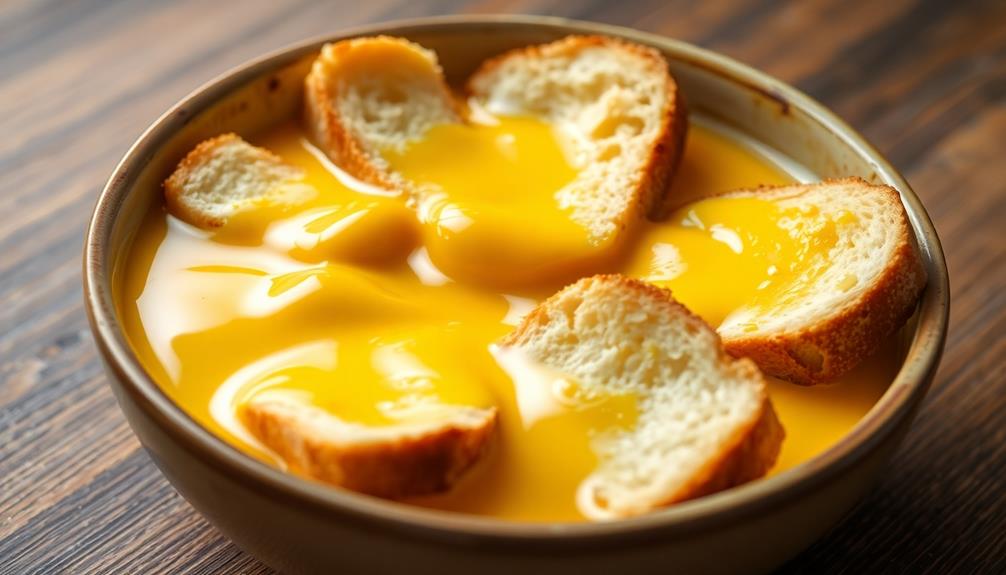
With the sandwich assembled, it's time to prep for cooking.
You'll want to grab a shallow bowl and crack a few eggs into it. Give them a good whisk to combine the yolks and whites.
Now, it's time to give those bread slices a nice coating. Dip each triangle into the egg mixture, making sure to get both sides evenly coated. As you pull the bread out, let any excess drip off before placing it on a plate.
Once all the slices are coated, heat up a skillet or griddle over medium heat. Add a little butter or oil to the surface and arrange the coated bread slices in a single layer.
Cook for a minute or two per side, flipping carefully, until the bread is golden brown and crispy. The egg mixture will create a delightful French toast-like texture.
With the bread ready, you can now assemble the complete Monte Cristo sandwich. Get ready for a flavor explosion!
Step 3. Fry the Egg-Coated Bread
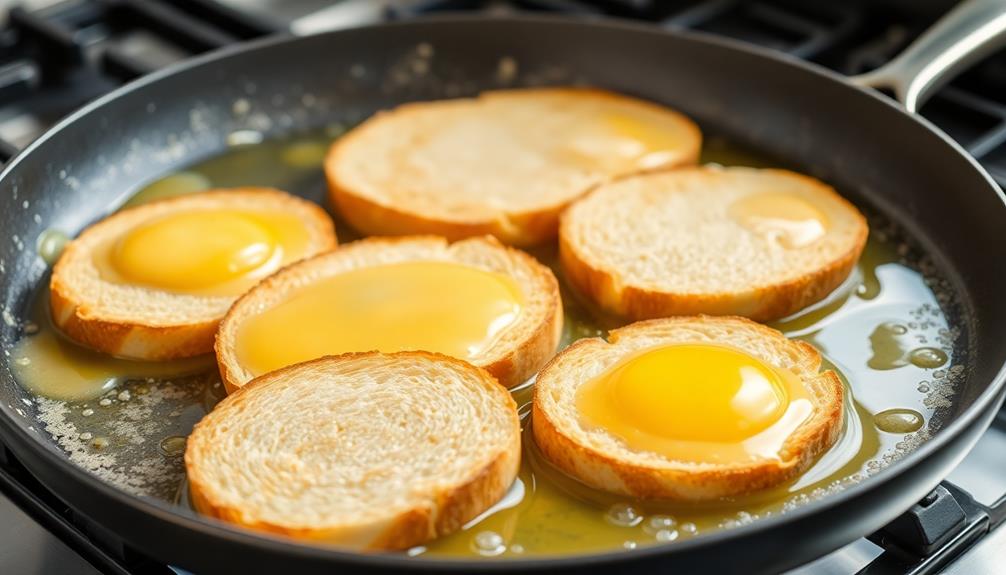
Now that the bread slices are coated in the egg mixture, it's time to start cooking them.
You'll want to grab a large skillet and heat it over medium heat. Once the skillet is nice and hot, add a bit of butter or oil to coat the surface.
Carefully place the egg-coated bread slices into the hot skillet. Fry them for 2-3 minutes per side, or until they're golden brown and crispy.
Be sure to keep an eye on them so they don't burn! The key is to get that delicious, crunchy exterior while keeping the interior soft and fluffy.
Once both sides are perfectly fried, transfer the slices to a plate lined with paper towels to drain any excess oil.
Now that you've got your crispy, eggy bread, you're one step closer to assembling the ultimate Monte Cristo sandwich!
Get ready to layer on the ham, turkey, and Swiss cheese for the next mouthwatering step.
Step 4. Assemble Sandwiches With Fillings
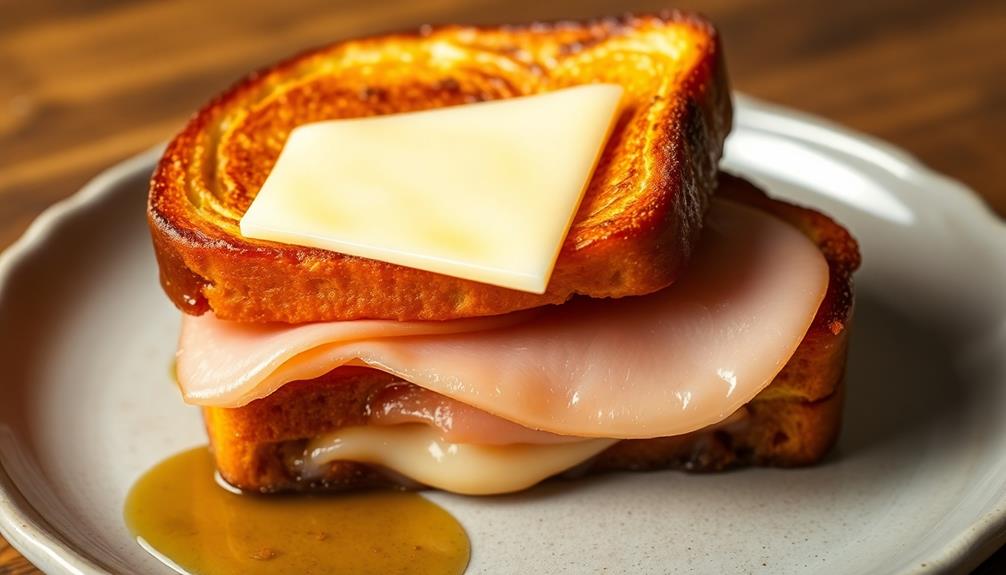
To assemble the Monte Cristo sandwiches, take the fried bread slices and layer them with the ham, turkey, and Swiss cheese.
Carefully place the fillings between the bread, making sure everything is evenly distributed. If you'd like, you can add a thin layer of mustard or mayonnaise to the bread for extra flavor.
Next, carefully close the sandwiches, pressing the slices together to secure the fillings. You can use toothpicks to hold the sandwiches in place if needed.
Once assembled, dip each sandwich in the beaten egg mixture, making sure to coat all sides evenly. This will help create a delicious, crispy exterior when the sandwiches are fried.
Step 5. Serve Sandwiches Warm
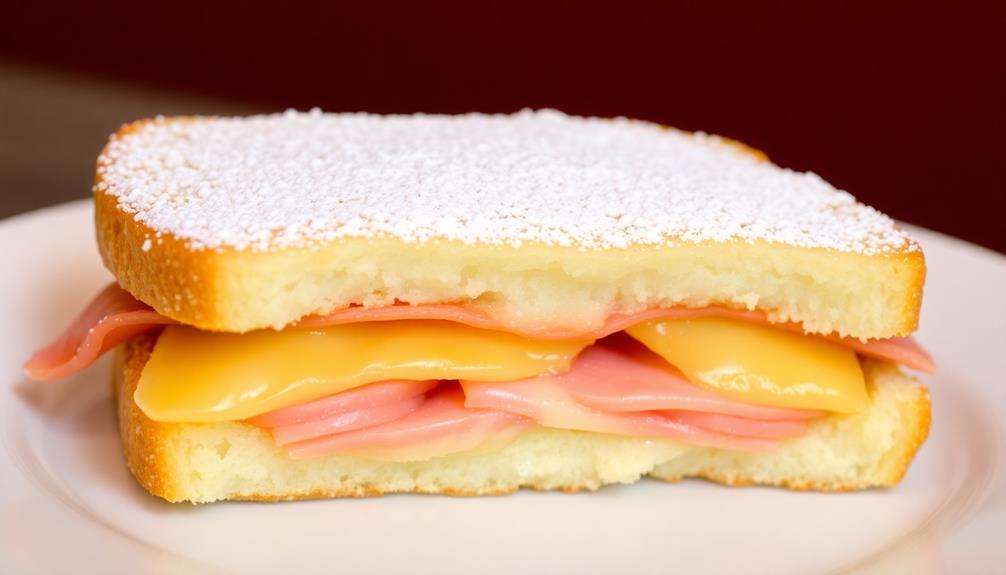
Once the sandwiches are assembled, it's time to cook them. Grab a skillet and heat it over medium heat. Melt a pat of butter in the pan, then carefully place the sandwiches in the hot butter.
Cook for 2-3 minutes per side, until the bread is golden brown and crispy. Gently flip the sandwiches to cook the other side. The cheese should start to melt, and the fillings will warm through.
Keep an eye on them, adjusting the heat as needed to prevent burning. When both sides are toasted to perfection, remove the sandwiches from the heat.
For an extra special touch, dust the warm sandwiches with a light sprinkling of powdered sugar. The sweetness pairs perfectly with the savory fillings.
Serve the Monte Cristo sandwiches immediately, while they're hot and fresh. Enjoy the melty, crunchy goodness in every bite!
Final Thoughts
The Monte Cristo sandwich, a delectable fusion of savory and sweet, is a culinary delight that has captivated food enthusiasts worldwide.
With its golden-brown exterior and gooey, cheese-filled interior, this unique creation is a true showstopper. What makes the Monte Cristo so special? It's the perfect balance of flavors – the savory ham and melted Swiss cheese, combined with the sweetness of the powdered sugar and fruit preserves, create a taste sensation that's simply unparalleled.
Whether you enjoy it for breakfast, lunch, or a decadent snack, the Monte Cristo is a versatile dish that never fails to satisfy.
So why not give it a try? Whip up this classic sandwich in your own kitchen and experience the magic for yourself. Trust us, one bite and you'll be hooked!
The Monte Cristo is a true culinary masterpiece, and we can't wait for you to discover its delightful deliciousness.
Frequently Asked Questions
How Long Does It Take to Assemble a Monte Cristo Sandwich?
Assembling a sandwich can be a quick and easy task!
It typically takes around 5-10 minutes to put one together, depending on how complex the recipe is.
You'll need to gather all the ingredients, layer them in the right order, and maybe even toast or grill the bread.
With a little practice, you'll be whipping up delicious sandwiches in no time!
Let's dive into the specifics of the Monte Cristo sandwich next.
What Type of Cheese Is Best for a Monte Cristo Sandwich?
When choosing the best cheese for your sandwich, you'll want something that melts well and complements the other flavors. Swiss cheese is a classic choice, as its gooey texture and mild taste pair perfectly with the rich, eggy bread.
Cheddar or Gruyère also work great, adding a little extra sharpness.
Ultimately, the best cheese is the one that excites your taste buds and brings the whole sandwich together in delicious harmony.
Get creative and find the blend that suits your preferences!
Can I Use a Different Type of Bread Instead of White Bread?
Absolutely! You can absolutely use a different type of bread instead of white bread for your sandwich.
The great thing about sandwiches is that you can get creative and experiment with different bread options. Try using whole wheat, sourdough, or even a delicious croissant – the possibilities are endless!
The key is to choose a bread that complements the flavors of your sandwich filling. Have fun trying out new bread ideas and finding your perfect combination.
How Do I Prevent the Sandwich From Becoming Too Greasy?
To prevent your sandwich from getting too greasy, you can try a few simple tricks!
First, use a denser bread that won't absorb as much oil. Whole wheat or rye bread work great.
Next, be careful not to overload the sandwich with fillings. Stick to just a few key ingredients.
Finally, blot the top of the sandwich with a paper towel before serving to soak up any excess grease.
With these tips, your sandwich will be perfectly crispy and delicious without feeling too heavy.
Is It Possible to Make a Vegetarian Version of the Monte Cristo Sandwich?
You bet! Creating a vegetarian version of the Monte Cristo sandwich is totally possible.
Instead of ham and turkey, you can use savory slices of grilled or sautéed vegetables like mushrooms, bell peppers, and zucchini.
Swap the cheese for a delicious plant-based alternative, and you've got a tasty meatless masterpiece.
Get creative with the fillings and have fun making this classic sandwich your own.
It's a delicious way to enjoy all the flavors without the meat!
